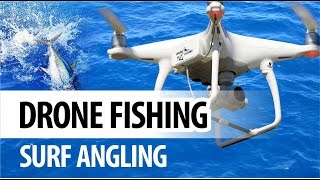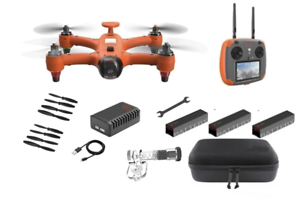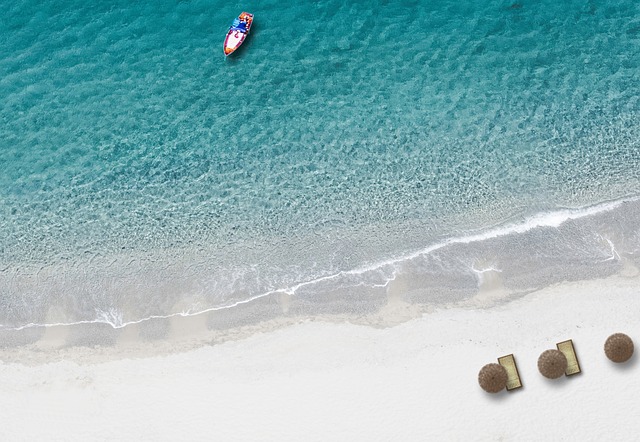
This article will cover the basics of a drone fishing device. We will also discuss what to look out for when selecting your drone, battery life and payload. We'll then discuss ways to get the best out of your drone. Continue reading for more tricks and tips. You will soon have the drone that you dream of! Let's start!...and maybe catch a few fish!
Basic drone fishing rig
The first thing you will need to drone fish is a set of hooks. The fishing line should not be more than twice the length. It should be mono- or braided. A Cat's Paw Loop or Uni knot should be tied to the fishing line. A sinker, weighing between two to eight ounces, and hooks to attach each section to the backbone will be required. Finally, you will need to attach the lead loop of a snap swivel and end loop of your drone.
There are many ways you can create a fishing drone. Attaching a hook and spinning the drone until the line releases is a basic way. Another low-cost option is to use a dropper and drop line. Droppers allow you to keep your main line under the drone, without it getting tangled up with propellers. You can add accessories to your fishing drones, such as a dock and a battery pack.
Once you've purchased the basic drone fishing rig, you'll need to purchase some additional equipment. A fishing line that is approximately 700m long, as well as a bait-dropping apparatus are required. These are optional extras but will make your drone fishing trip more enjoyable. A drone can give you a better view of the surroundings and help you spot fish easier.

Payload for drone fishing system
If you're planning on catching a fish using a drone, you need to be aware of the safety measures that need to be taken. You should never fly your drone in strong winds or rain. Here are some steps:
First, ensure that your drone can carry a lot of weight. It won't be stable if loaded with braided rope or heavy lures. It may also blow off its course if you are fishing along the coast. It's also important to check local regulations and laws, as some may not allow fishing from a drone. If you decide to fish with your drone, make sure it has a good carrying capacity.
Next, you need to decide which accessories will be needed to mount your drone. A good rule of thumb is to use a rigging system that has a central attachment point to reduce weight distribution problems. Motor struts or landing gear and the legs of the drone are all good options for attaching. Avoid attaching payloads to your camera or gimbal, as they can be damaged. You can tie a fishing line running from one end of the camera to the opposite. Tape can be used to keep it from falling apart.
Battery life of drone fishing rig
Make sure you check your batteries before you go fishing with your drone. This will prevent your drone from running low on battery life, and you can focus on fishing instead. Some drones can be charged with car batteries or solar panels. Start out by having fully charged batteries. This will ensure your drone is ready to fly when you reach your fishing spot.

It is also important to take into account the drone’s flight time. While some models are faster than others, a drone that can fly for just twenty-two minutes will suffice. This is a great option if you plan to spend hours on the ocean with your drone. A drone that has limited endurance is likely to be unusable and renders it impossible to catch fish.
After you have setup your fishing rig, attach the fishing line clip to either the legs or the motor struts. Then, attach the bait to the fishing line. When you are ready to drop your bait, make sure you lock the reel. Once you release the line, tension will build and the drone will drop the bait in the water. Remember to charge the battery after every use, or it may not work properly.
FAQ
What US states are drones legal?
You can legally operate a drone for hobby purposes. The Federal Aviation Administration (FAA), established guidelines that allow individuals to fly small unmanned aircraft systems. These UASs have to be registered with FAA before they are allowed to fly. These UASs can also be flown by commercial operators if they are allowed to fly under certain conditions.
A drone can spy on you.
Yes, anyone can use drones to spy on them. The only way to protect yourself from drones is to be aware of them and avoid areas where they may fly. Do not hesitate to call 911 if a drone is seen flying.
Are drones permitted at public events?
You can fly your drone anywhere you like, provided you adhere to the rules. If you want to fly your drone in public events like parades, festivals, concerts, etc., you must get permission from the event organizers.
Statistics
- According to the multiple listing service (MLS), houses and apartments with drone photographs are up to 68 percent more likely to sell than those without pictures. (thedroneu.com)
- With the top 10% making over $100/h and the bottom 10% making as low as $10/h. (dronesgator.com)
- According to ZipRecruiter, the minimum hourly wage of drone pilots is $20. (thedroneu.com)
External Links
How To
How to Fly Drones With Beginners
A drone refers to a remote-controlled aircraft designed for aerial photography, surveillance and scientific research. Drones have been in use since World War II. However, commercial use began in 2010 when DJI released their Phantom series of quadcopters. From beginner-friendly drones such as Parrot AR Drone 2.0 through professional-grade multirotor craft like DJI Mavic Pro, many types have been available.
There are many options for flying a drone.
-
Remote control – This is when you attach a device to your hand that allows you to control the drone's flight path. There are two types of controllers available: joysticks and on/off switches.
-
Manual Control - This method uses a smartphone app to remotely control the drone using GPS coordinates. You must keep track of the location where you want the drone to go and follow the instructions from the app.
-
Autonomous Flight: This means that the drone will take care of all the piloting. It's basically flying autonomously without any human intervention. To enable autonomous flight, the drone should have a built in camera and sensors capable recording images and data.
-
Triggered flight - This is similar to manual control except that the pilot sets up a preprogrammed route and the drone follows the route until it reaches its destination. Once the programmed route has been completed, the drone returns to the base automatically.
-
Landing Gear – A few drones come with landing gear. This allows them land safely in the event of losing power or running out of battery.
-
Goggles: Some pilots use goggles in order to protect themselves against debris when operating.
-
Camera - You can capture photos and videos with your drone from the air.
-
Obstacles-Some drones come with obstacle avoidance devices that keep them from hitting obstructions.
-
Speed - Some drones can travel at speeds over 40 mph.
-
Battery Life – Most drones will last 20 minutes to three hours depending on how powerful they are.
-
Range - Depending on the model, some drones can travel up to 30 miles away.
-
Power source: Some drones will require an external power source while others can be powered by internal batteries.
-
Weight - Some drones are lighter than others, while some models can weigh as much as 4 pounds.
-
Size - Drones range from small devices that fit in one's palm to large crafts that weigh more than 50 pounds.
-
Price – All drones fall into a price category. These range from expensive models that cost thousands to affordable options that start at 100 dollars.